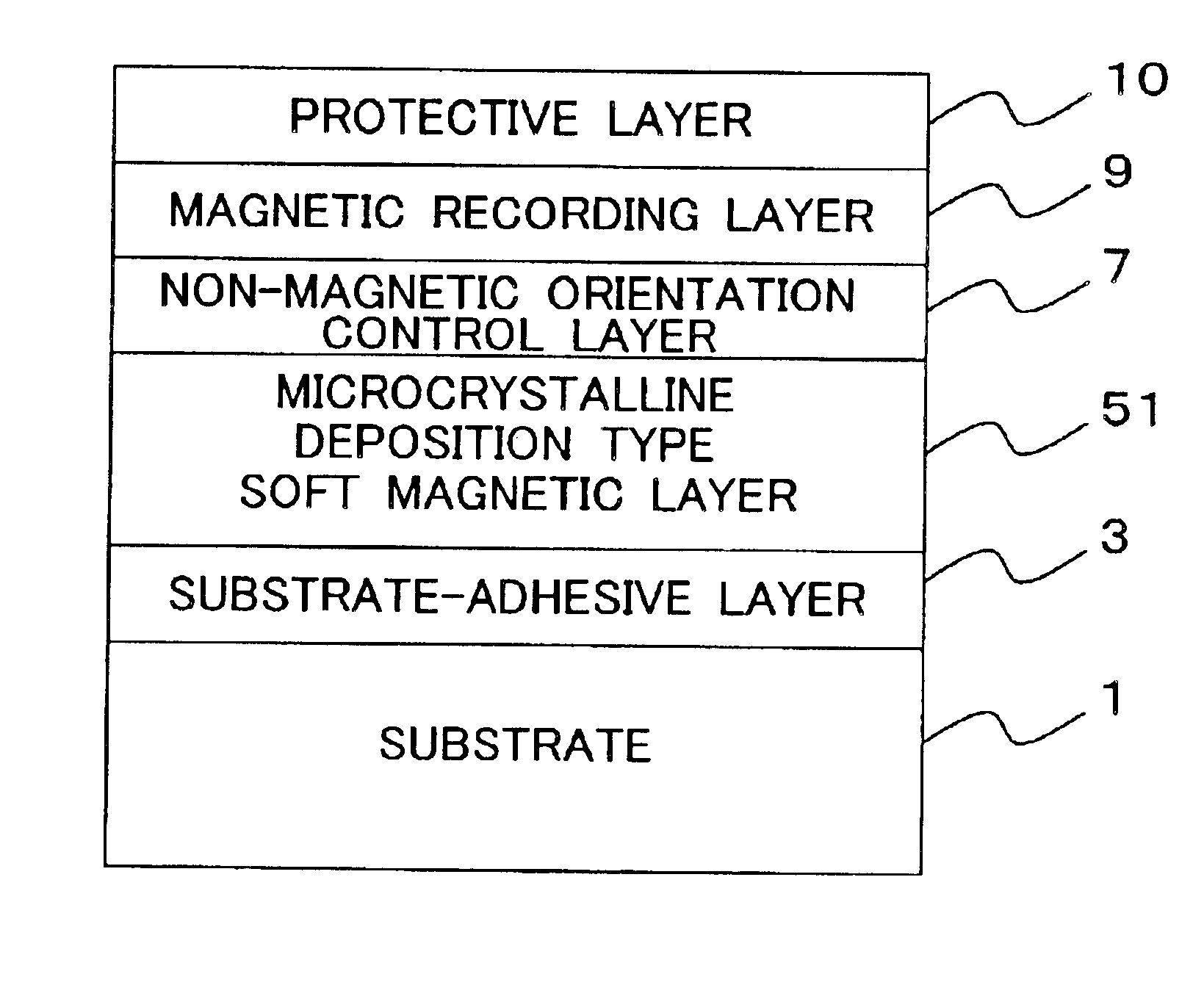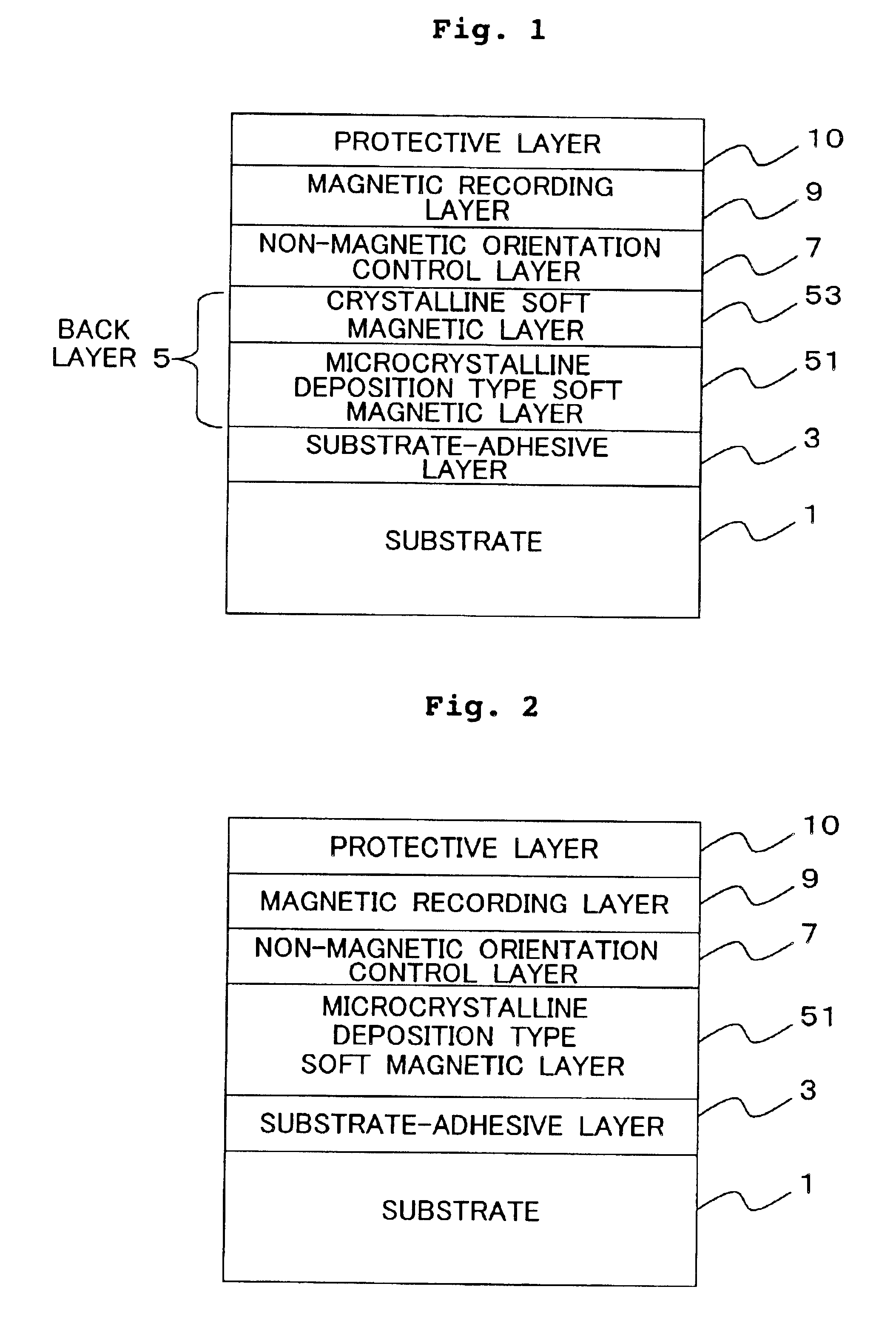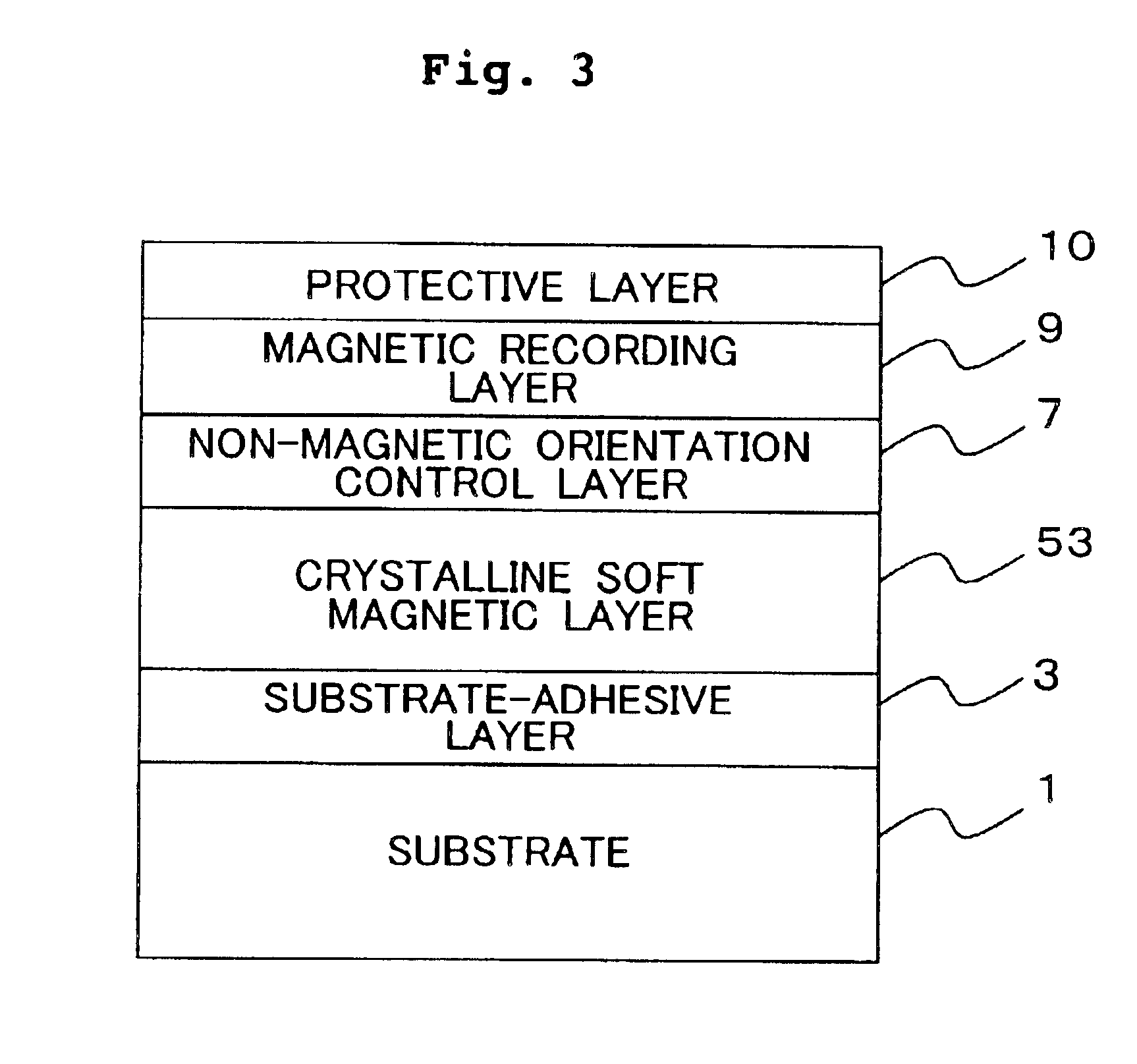Magnetic recording medium and magnetic recording apparatus
a recording medium and magnetic technology, applied in the field of magnetic recording mediums, can solve the problems of unsuitable for the mass production of information recording media, high cost, etc., and achieve the effects of excellent thermal stability, low medium noise level, and high resistance to thermal fluctuation and thermal demagnetization
- Summary
- Abstract
- Description
- Claims
- Application Information
AI Technical Summary
Benefits of technology
Problems solved by technology
Method used
Image
Examples
example 1
FIG. 1 shows a schematic sectional view illustrating a magnetic recording medium according to the present invention. The magnetic recording medium comprises, on a substrate 1, a substrate-adhesive layer 3, a back layer 5, a non-magnetic orientation control layer 7, a magnetic recording layer 9, and a protective layer 10. The back layer 5 is composed of a microcrystalline deposition type soft magnetic layer 51 and a crystalline soft magnetic layer 53. The crystalline soft magnetic layer 53 is formed on the side of the magnetic recording layer 9. In Example 1, Fe—Ta—C was used for the microcrystalline deposition type soft magnetic layer 51, and permalloy was used for the crystalline soft magnetic layer 53. However, there is no limitation thereto. A microcrystalline deposition type soft magnetic material such as Fe—Ta—N may be used for the microcrystalline deposition type soft magnetic layer 51 in place of Fe—Ta—C, and a crystalline soft magnetic material such as Fe—Al—Si may be used f...
example 2
FIG. 6 shows a schematic sectional view illustrating another specified embodiment of the magnetic recording medium according to the present invention. The magnetic recording medium comprises, on a substrate 1, a non-magnetic layer 62, a magnetic recording layer 63, and a protective layer 64. The magnetic recording medium was manufactured in accordance with the following procedure.
It is noted that in the following description, a glass substrate for the magnetic disk should be used in view of the industrial production, as the substrate of the medium to be used for the evaluation, in order to evaluate the characteristics of the manufactured medium. However, as described later on, an experiment was performed while applying the heat up to a high temperature at which it was difficult to use an ordinary glass substrate. Therefore, a thermally oxidized silicon substrate was firstly used to investigate the process for manufacturing the medium. After that, a glass substrate for the magnetic d...
example 3
FIG. 10 shows a schematic sectional view illustrating still another embodiment of the magnetic recording medium according to the present invention. The magnetic recording medium comprises a magnetic recording layer 9 and a protective layer 10 on a substrate 1. In Example 3, the magnetic recording layer 9 was formed directly on the substrate 1. However, in order to improve the crystalline orientation of the magnetic recording layer 9, a non-magnetic layer may be provided between the substrate 1 and the magnetic recording layer 9. Alternatively, a two-layered perpendicular magnetic recording medium may be constructed by providing a back layer which is formed of a soft magnetic material and which is disposed between the substrate 1 and the magnetic recording layer 9.
An explanation will be made below about a method for producing the magnetic recording medium having the laminated structure shown in FIG. 10.
At first, a washed quartz glass substrate for the magnetic disk was installed to a...
PUM
| Property | Measurement | Unit |
|---|---|---|
| average crystal grain diameter | aaaaa | aaaaa |
| temperature | aaaaa | aaaaa |
| volume fraction | aaaaa | aaaaa |
Abstract
Description
Claims
Application Information
 Login to View More
Login to View More - R&D
- Intellectual Property
- Life Sciences
- Materials
- Tech Scout
- Unparalleled Data Quality
- Higher Quality Content
- 60% Fewer Hallucinations
Browse by: Latest US Patents, China's latest patents, Technical Efficacy Thesaurus, Application Domain, Technology Topic, Popular Technical Reports.
© 2025 PatSnap. All rights reserved.Legal|Privacy policy|Modern Slavery Act Transparency Statement|Sitemap|About US| Contact US: help@patsnap.com



